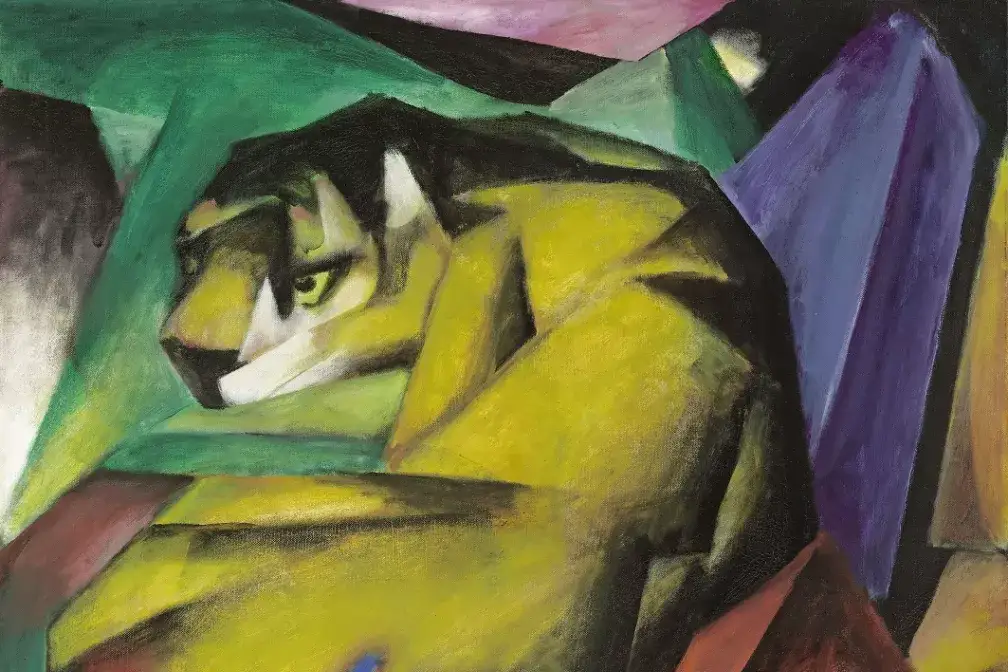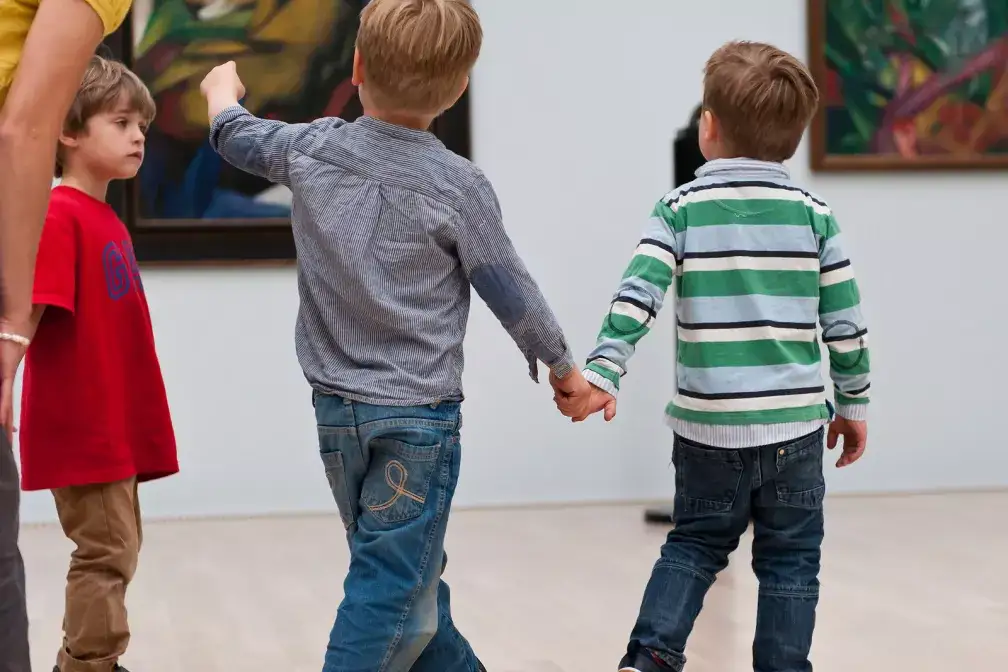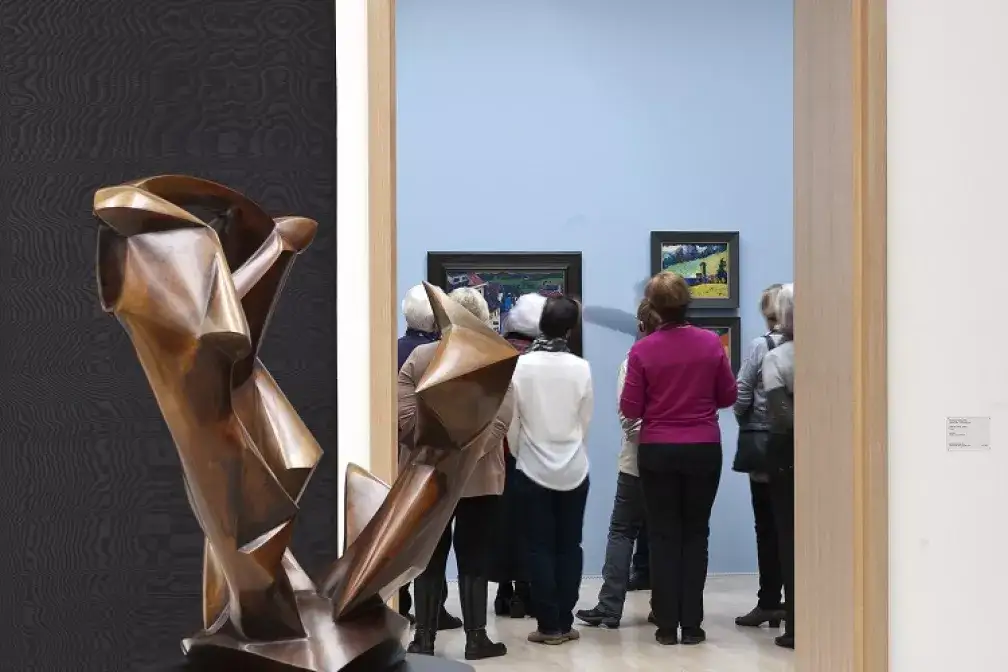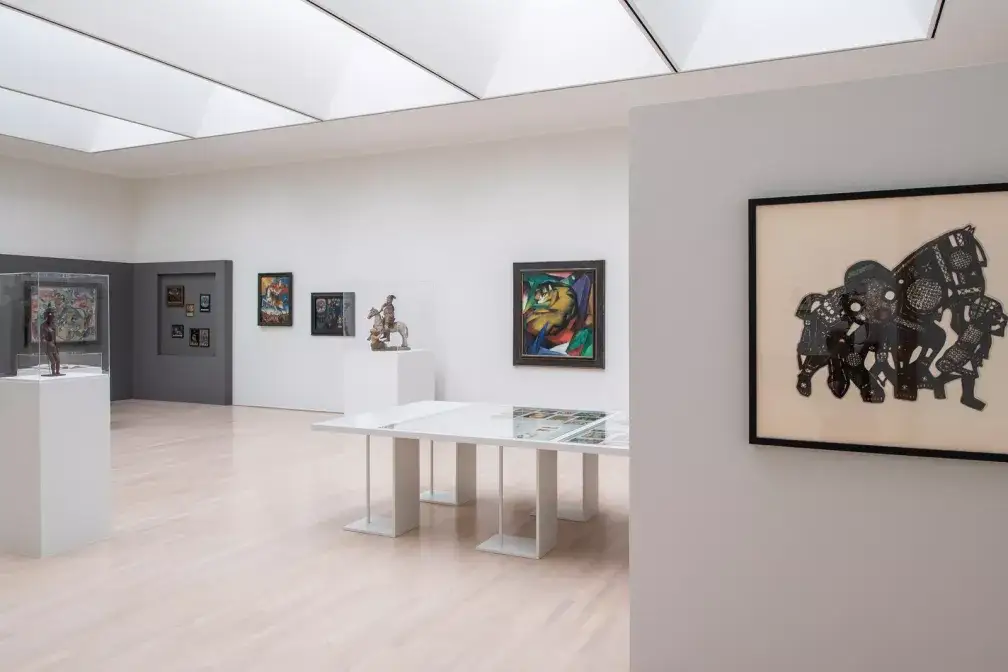Lenbachhaus: Discover the famous collection of The Blue Rider
Lenbachhaus in Munich: Municipal museum, art exhibitions and historic building
The Städtische Galerie im Lenbachhaus (municipal art gallery of Munich) is famous for the world's largest collection of the Blue Rider group founded by painter Franz Marc. But there is much more to discover.
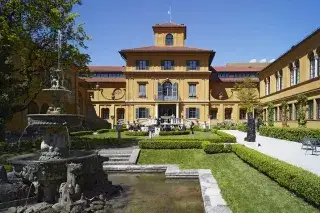
More actions
Why the Lenbachhaus is worth a visit:
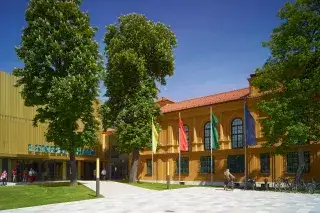
The world's largest collection of The Blue Rider is a must-see for tourists and locals!
What to see? The Lenbachhaus presents art from the 19th century, the Blue Rider movement and the New Objectivity, as well as international contemporary art. Many world-famous originals like "The Blue Horse" by Franz Marc are shown here. In addition, there are temporary exhibitions on contemporary art and classics from the collection, as well as different guided tours and workshops for children, adults, and senior citizens.
What's special? The architecture of the museum is extraordinary. The artist’s residence, built in 1887 in a Tuscan style by Gabriel von Seidl, was expanded in 2013, as a modern cubic building by the English architects Foster + Partners was added to the complex. You can enjoy a relaxing break on the terrace of the museum café and in the beautiful historical garden, which is freely accessible during opening hours. On Thursdays, the Lenbachhaus opens until 8 p.m.
Lenbachhaus: The most important information at a glance
- Location: In the "Kunstareal" near Königsplatz
- Museum category: Art
- Recommended duration of stay: Approx. 1.5 hours
- Evening opening "free & easy": Every 1st Thursday of the month from 6 to 10 p.m. admission is free.
- Children's program: An audio guide developed by children for children, guided tours and workshops (on request also for school classes), lots of space for running in the garden
- How to get there: U2/U8 or bus 100 to Königsplatz, U1/U7 to Stiglmaierplatz, tram 27 to Karolinenplatz
- Parking: There are some parking garages nearby
- Website: www.lenbachhaus.de/en
The highlight at the Lenbachhaus: The Blue Rider
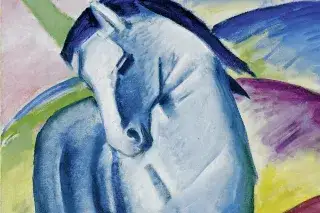
The Lenbachhaus has the world's largest collection of works by "Der Blaue Reiter" (The Blue Rider), one of the most important groups of avant-garde artists in the early twentieth century, founded by Wassily Kandinsky and Franz Marc. Central works by these two painters are an important part of the exhibition, just as well as the world-famous paintings by August Macke, Paul Klee, Alexej Jawlensky and Gabriele Münter.
The core of this treasure consists of the generous donation by the painter Gabriele Münter, who was Wassily Kandinsky's companion until 1914. On her eightieth birthday in 1957, she bequeathed more than a thousand works by the Blue Rider artists to the Lenbachhaus, among them ninety oil paintings by her husband Kandinsky as well as around 330 watercolors and drawings, his sketchbooks, reverse glass paintings, and his printed oeuvre.
During your vistit, don't miss out on these highlights:
- "Blaues Pferd I" by Franz Marc: With its powerful symbolics, the image of the blue horse has become one of the most famous paintings of The Blue Rider. The picture is dominated by complementary contrasts: from vermilion and green to crimson and yellow to violet, blue and orange.
- "Reitendes Paar" by Wassily Kandinsky: An early work by Wassily Kandinsky that creates a poetic image: mysterious and surreal, almost like a fairytale.
- "Das Russen Haus" by Gabriele Münter: A picture of the artist's own home from the years she spent together with her partner Kandinsky in Murnau. The villagers had given their property the name "Russen-Haus" (Russian House) because Kandinsky had moved there as a "foreigner".
- "Rosengarten" by Paul Klee: The most significant of a series of works in which Klee, around 1920, is merging grown and built structures into one rhythmical big picture.
Contemporary art and other main focuses of the collection

Another focus of the collection is on major trends in international contemporary art. The basis was created by the acquisition of Joseph Beuys' "Zeige deine Wunde" ("Show your wound") in the 1980s. Today, the collection includes a variety of sculptures and installations from different creative periods. Among others, works by Gerhard Richter, Sigmar Polke, Anselm Kiefer, Andy Warhol, Dan Flavin, Jeff Wall, Katharina Sieverding, Christian Boltanski, Lucio Fontana, Michelangelo Pistoletto, Arnulf Rainer, Andreas Hofer, Isa Genzken or Olafur Eliasson are shown.
In addition, the Lenbachhaus's permanent collections include three more exhibitions:
- The "19th Century" collection deals with the original focus of the Lenbachhaus. In the first decades, the gallery mainly collected and exhibited works of 19th century paintings from Munich and German art of the early 20th century.
- The exhibition "Neue Sachlichkeit" (New Objectivity) is dedicated to art after the First World War. To distance themselves from the Expressionism, the artists of the 1920s and 1930s started to paint a sober-realistic reality.
- In the collection "Art after 1945", new art movements but also new media such as performance and video art or conceptual art are displayed.
Was tun!? At the Lenbachhaus - art education for everybody
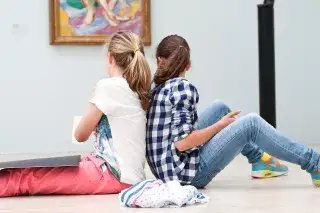
Was tun?! (literally: "What to do") is the Lenbachhaus's educational art program. It offers activities for a variety of groups: From children to young adults to senior citizens.
- Group tours: public and private, available in various languages
- Children's audio guide
- Art talks with art mediators in the exhibition
- Workshops and guided tours for families
- Workshops for children and teenagers, in summer also in the garden of the museum
- KulturSalon+ : A free offer for elder people who feel lonely, cannot afford a cultural visit or are physically impaired
- KunstZeit: A shared art experience for people with dementia and their companions. In front of selected works of art, there is plenty of time to share your own thoughts, feelings and memories.
- School classes: There are programs for all grades in various exhibitions (please contact fuehrungen-lenbachhaus@muenchen.de for more information).
Events

Readings, concerts, performances, discussions and lectures complement the exhibitions.
Shop and Café
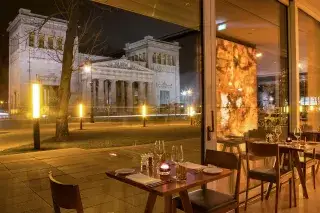
- Café "ELLA": Ella was the pet name Wassily Kandinsky gave to Gabriele (Gabriella) Münter. The wide terrace of the restaurant is one of the most beautiful spots to catch some sun in the city. There you can enjoy a view of Königsplatz square and the surrounding magnificent classicist ensemble.
- The museum shop offers a wide selection of books on art criticism, theory and art history as well as monographs and exhibition catalogues related to the Lenbachhaus's collection. Selected literature on artists and themes of the special exhibitions is presented on dedicated tables near the entrance.
Tickets
- Regular: 10 Euro
- Discounted: 5 Euro
- Annual ticket: 20 Euro (discounted: 10 Euro)
- Under 18 years: free admission
Digital offers:
- The "Collection Online" features works from the Lenbachhaus's three main collections, including many objects and artworks from the depot that are not currently shown in the museum.
- The audio guide provides detailed information about selected works (app and online).
- Digital tours of some exhibitions can be found on the website, there is also a wide selection of films on the exhibitions and the collections.
- Social media: The Lenbachhaus is on Facebook, Instagram, YouTube, Pinterest, and Google Arts & Culture and sends out a regular newsletter.
The history of the Lenbach Villa

Franz von Lenbach had a palace in mind when he decided to build his villa near the magnificent Königsplatz. Between 1887 and 1891, the L-shaped property was built, consisting of a studio wing and a residential wing. The historic garden in front of the building is inspired by the Italian Renaissance.
Lenbach designed his outstanding villa with the Munich architect Gabriel von Seidl, who also built the Bavarian National Museum, the Deutsches Museum and the rondel at the Stachus. And the famous portrait artist was not modest with his interior design either. Antique sculptures and copies of antique works of art, paintings, tapestries and carpets decorated the rooms.
In 1912, the two wings, the studio and the main house were connected. In 1924, Lenbach's widow sold both the building and parts of the inventory and works of art to the City of Munich. These artworks were the first posessions of the Lenbachhaus art collection. In 1927, the city contracted the architect Hans Grässel add another wing on the north side of the building.
Two years later, the Lenbachhaus was opened to the public. Large parts of the house were destroyed during the Second World War, but from 1947 it was possible to exhibit art in the north wing again. In 1957, Gabriele Münter donated the unique collection from The Blue Rider to the city and the Lenbachhaus.
Kunstbau and Kubus: Architectural extensions
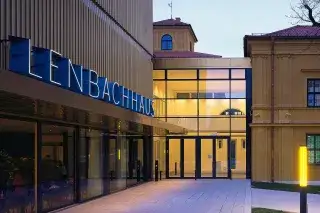
The Kunstbau is an attached building to the Städtische Galerie im Lenbachhaus. It was opened in 1994 and impresses with its space and openess. This additional showroom is located on the intermediate level of the Königsplatz subway station. The unusual dimensions take into account the growing spacial needs of modern art.
In 2013, another new building designed by the international star architect Sir Norman Foster (Reichskuppel Berlin, Gruke London) was opened to the public: The Kubus. During this rebuilding phase the former residence and studio of Franz von Lenbach have also been carefully restored. The historical villa is now partly contained in the interior of the new building.
Accessibility and services for individuals with disabilities
The Lenbachhaus and the Kunstbau are barrier-free. The elevators in the building are suitable for wheelchairs, but he elevator to the Kunstbau must be operated by staff (please ring). An orientation map is available at the ticket office.
- Two parking spaces for visitors with disabilities are available on Luisenstraße.
- A barrier-free toilet is located in the basement.
- Special tours: Guided tours in sign language can be arranged upon request.
In cooperation with the cultural department and the museums
This article about Munich's museums is sponsored by the Cultural Department of the City of Munich and was conceived in cooperation with the State Agency for Non-State Museums in Bavaria. The content has been coordinated between the participating museums and muenchen.de, the official city portal.
At a glance
Lenbachhaus München
Luisenstr. 33
80333
München
Tel:
+498923396933
Fax:
+498923332003

1 - 30 of 420 events
-
until
-
until
-
until
-
until
-
until
-
until
-
until
-
until
-
until
-
until
-
until
-
until
-
until
-
until
-
until
-
until
-
until
-
until
-
until
-
until
-
until
-
until
-
until
-
until
-
until
-
until
-
until
-
until
-
until
-
until

